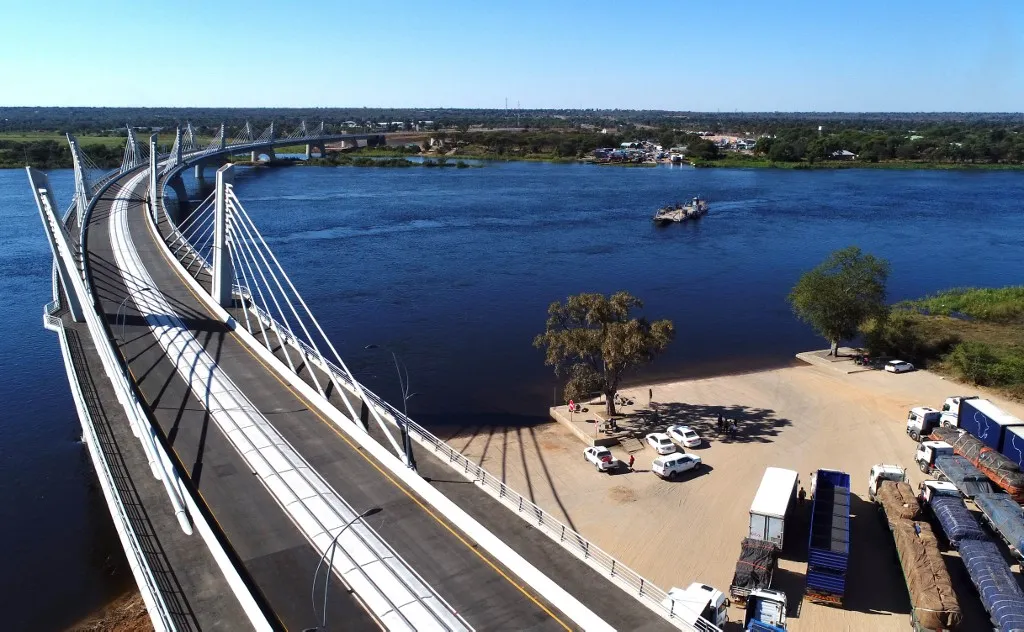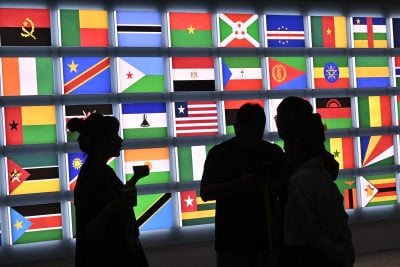Infrastructure is a theme I have returned to repeatedly, both in these pages and elsewhere. It is the spine on which any functional economy is built, and the global infrastructure need is massive. Functioning infrastructure enhances productivity and competitiveness and “helps provide economic incentives to public and private sector participants,” according to the Federal Reserve Bank of Atlanta.
The absence of functioning infrastructure stalls economic growth and reverses its gains. The global infrastructure gap is undermining global growth and productivity, with the gap more pronounced in some parts of the world than others, especially in Africa. African economies are thus attuned to any shifts in the global infrastructure financing landscape.
The White House estimates that the infrastructure financing need across the developing world is $40 trillion. McKinsey puts the global infrastructure requirement at about $3.3 trillion annually through 2030 to meet forecasts for GDP growth.
These projections were made before the pandemic and the economic scarring it has wrought – especially in low and lower-middle income countries. Even when FDI flows and investment in infrastructure rebounded in 2021, it was higher income economies that “saw the biggest rise by far, with FDI reaching an estimated $777 billion in 2021,” according to UNCTAD.
The patterns of capital flows in industry and infrastructure retained and worsened the pre-pandemic pattern of favouring higher income economies, with low-income countries lagging far behind.
A confluence of decades-long delays and postponements in building and maintaining infrastructure coupled with climate-induced extreme weather events across the globe act to increase a pervasive and growing gap. Infrastructure financing is an economic security concern in most countries across the world.
Belt and Road’s stunning ambition
In 2013, China introduced a globe-spanning, infrastructure financing programme called One Belt One Road, later changed to the Belt and Road Initiative (BRI). There is no real list of projects or total amount of the investment. But to give some perspective on the size, the data firm Refinitiv estimates that in the first quarter of 2020, the value of BRI projects exceeded $4 trillion for the first time.
They classified 1,590 projects (with an estimated value of $1.9 trillion) as BRI projects, and another 1,574 (estimated value of $2.1 trillion) as “projects with Chinese involvement”.
The relentless critique of China’s debt-fuelled infrastructure financing and the risk it carries for borrowing countries notwithstanding, the scale and ambition of the BRI is stunning. According to the World Bank, BRI covers a third of global trade and over 60% of the world’s population. Should both the US and the European Union match this scale either combined or separately, the global infrastructure gap will shrink.
So it was with great anticipation that we welcomed two global financing programmes in 2021.
The US introduced Build Back Better World (B3W) and the European Union introduced Global Gateway. Both programmes emphasised that they presented alternatives to the BRI. Global Gateway’s stated key advantage was the “quality of the investment”. And B3W repeated the same themes, as a “values-driven, high-standard, and transparent infrastructure partnership.”
US and EU responses pale in comparison
Then, as now, I argued that in order to be considered a competitor or alternative to China’s BRI, these two initiatives needed to match the Chinese in scale and scope.
The EU’s Global Gateway is already a disappointment. As my Centre for Global Development colleagues explain in a blog: “the Global Gateway is a mere packaging exercise of things that have already been programmed. The €300bn is mainly made up of a mixture of existing commitments from European development finance institutions… the Global Gateway also makes highly questionable assumptions about leveraging private investment, rather than actual spending or any new commitments.”
B3W presents a similar challenge. The intensity of the battle in the US Congress to pass a domestic infrastructure bill does not inspire confidence in the possibility of any BRI-sized response from the US. Up to today, it’s not even clear what the size of B3W would be – whether it will include new resources or simply repackage existing development financing programmes.
More troubling is B3W’s apparent excision of hard physical infrastructure from its remit, with a focus on “climate, health and health security, digital technology, and gender equity and equality”.
In Africa, which lags all other regions of the world in the availability of paved roads and electricity, that deficit is set to grow without a massive influx of hard infrastructure investment. At current rates, the minimum deficit of the road network will be 60,000km by 2040 and an additional 30,000km gap for the rail network.
It is worth repeating that this continent will be home to half of the projected 2bn increase in global population by mid-century. The Africa region and other low-income countries in the world, threatened by the unfolding climate calamity, will now have to focus on building infrastructure that is stronger and more resilient, implying more expense. B3W still has time to return to the drawing board and address infrastructure writ large.
Last year the US indicated that B3W would unveil “five to ten large infrastructure projects around the world”. One hopes these are simply the first of many announced projects that are funded quickly. As the US has acknowledged, there is a $40 trillion global infrastructure gap and a slow and piecemeal approach to B3W will not meet that need.
- G7’s infrastructure initiative will struggle to compete with China
- Review – China and Africa: The New Era by Daniel Large
- Chinese lending decline leaves Africa with huge infrastructure gap
The only way to close the gap
If there is one thing in which each of these programmes can learn from the BRI it is ambition. BRI’s ambition captures the scale necessary of any infrastructure financing programme that targets this gap.
This is not a defence of China’s methods. While the “debt-trap” argument is completely unproven, the opacity around China’s signature agreements opens the BRI up to legitimate criticism.
The opacity of China’s agreements notwithstanding, their effort remains the only bilateral infrastructure programme that matches the problem in scale and ambition. I would rather fight to improve an imperfect, but existing programme than face an ever-widening infrastructure gap with haphazard, undersized responses.
Gyude Moore is a senior policy fellow at the Center for Global Development.
Want to continue reading? Subscribe today.
You've read all your free articles for this month! Subscribe now to enjoy full access to our content.
Digital Monthly
£8.00 / month
Receive full unlimited access to our articles, opinions, podcasts and more.
Digital Yearly
£70.00 / year
Our best value offer - save £26 and gain access to all of our digital content for an entire year!
 Sign in with Google
Sign in with Google 



